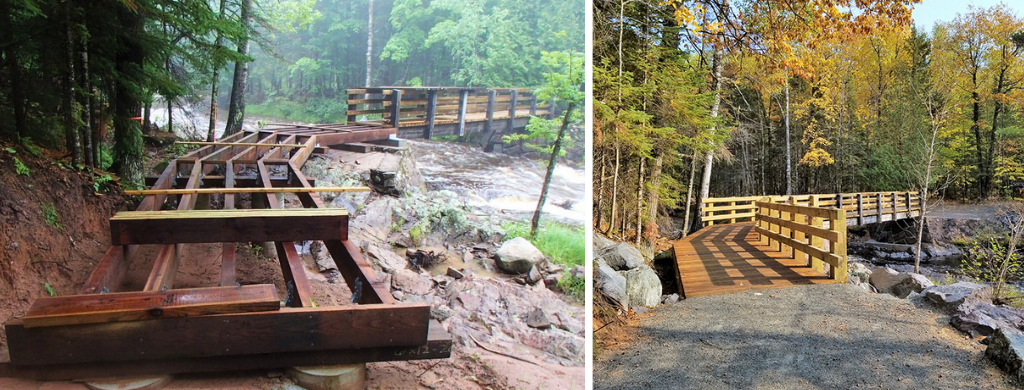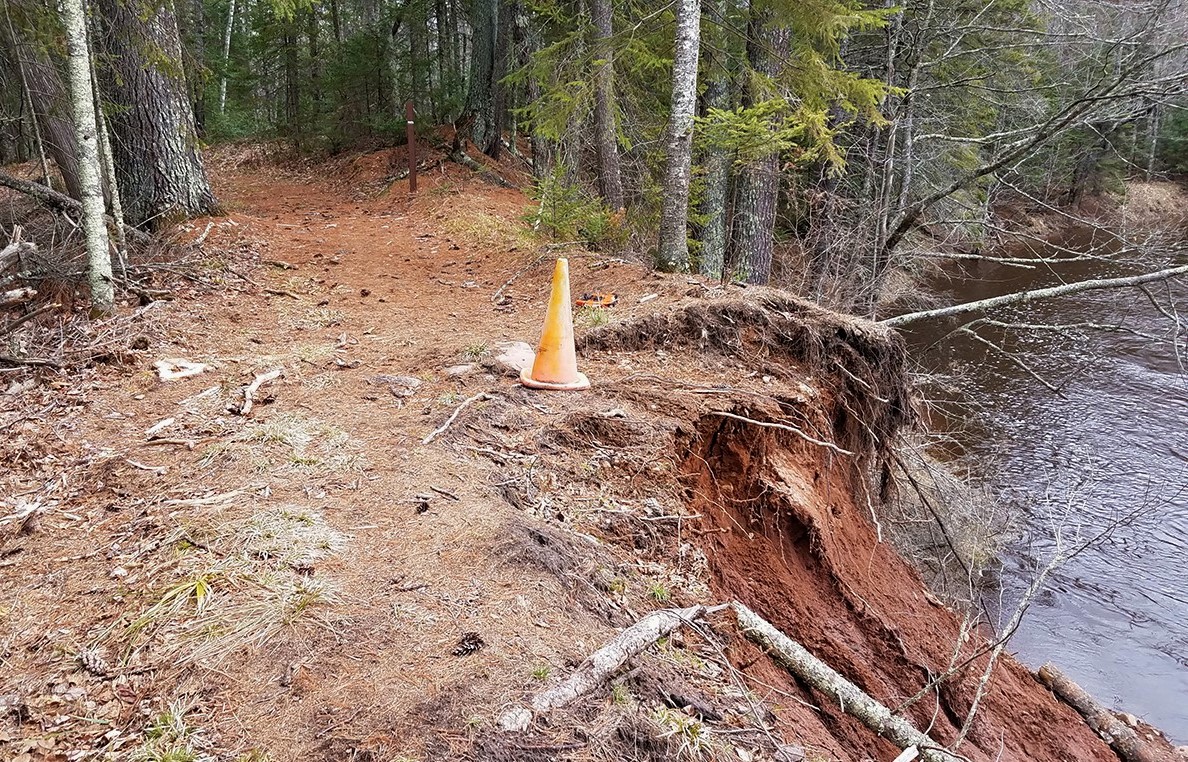Pattison State Park celebrated its 100th anniversary in a particularly meaningful way: with the grand re-opening of beloved trails and bridges destroyed by a flood in June, 2018. Just over two years later, park enthusiasts are once again exploring the 1,436 acres of this rugged northwestern Wisconsin parkland, rebuilt with the goals of sustainability and flood resiliency in mind.

Located just south of the City of Superior on WI-35, Pattison State Park is a favorite for many reasons.

First established in 1920 and reinvigorated by the work of the Civilian Conservation Corps (CCC) thereafter, the park is home to Big Manitou Falls — the highest waterfall in the state — and year-round recreational trails that wind along the Black River and its tributaries. When the river rose to 10 feet in the Father’s Day flood of 2018, the aftermath revealed washed-out trails and bridges, downed trees, deep gullies and scour that reached down to the bedrock. Trails closed, many portions unsafe for visitor use.
The Wisconsin Department of Facilities Development (DFD) and Wisconsin DNR hired MSA to lead the design, environmental and construction management portions of the large reconstruction effort due to its experience with other DFD projects across the state. The project consisted of a site survey and designs that rerouted 2,750 linear feet of existing trail away from the river to higher ground, 6,150 linear feet of trail widening and reconstruction on the Little Manitou and East Beaver multi-use trails, aggregate placed on the Big Manitou Falls Trail, trail widening and aggregate on the West Beaver trail, upgraded site grading, underground drainage tiles and the installation of new, larger stormwater culverts throughout.

MSA also provided redesign services for 347 linear feet of timber boardwalk that was installed over wet areas within the park. The boardwalks allow for aquatic species and vegetation to flourish, undisturbed by foot traffic. Further, MSA assisted with the design and preparation of a new pedestrian bridge as part of the re-routing of trail away from the river. The new bridge deck was raised and widened to accommodate both emergency vehicles as well as the ATVs and UTVs park employees use to perform maintenance.
This project required close coordination and dedicated correspondence with a variety of state and local entities, including the park management and staff, DNR, DFDM, construction crews and local citizens. The result is the successful completion and re-opening of a beloved state park, with a renewed sense of stability and resiliency that will carry it confidently forward. Visitors were officially welcomed back to the trails on August 8, 2020.
